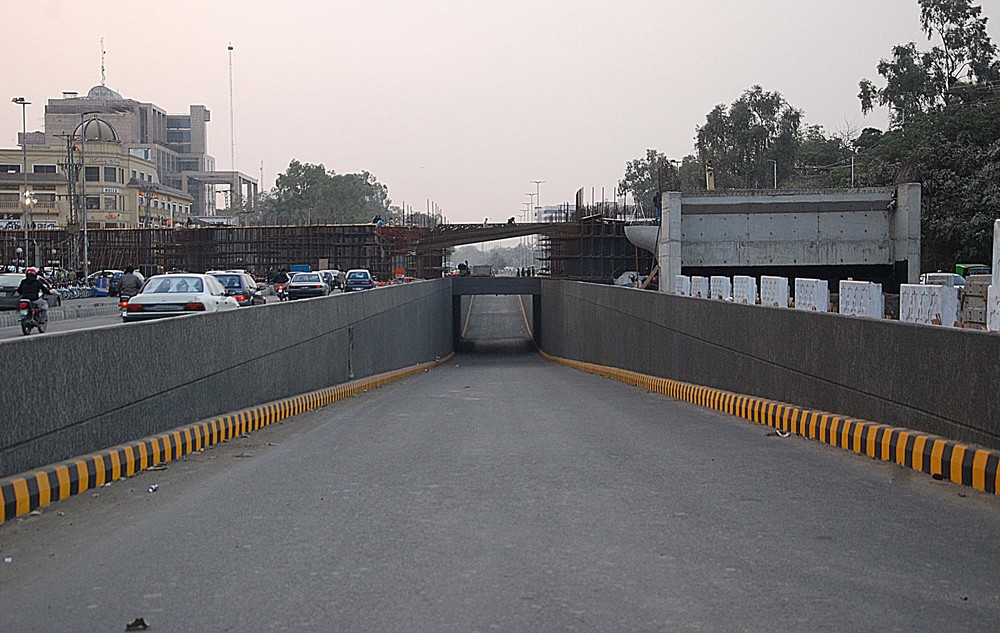
A complete design of the Orange Line, which should have been prepared in the first place, is still patchy and admittedly flawed

One is likely to smell the rat, as the complete structural design of Lahore Orange Line Metro Train is still not ready, despite the Punjab government launching the ‘controversial’ project many a month back.
The engineering design and architectural details are available for only some portions where work is currently underway.
A senior official in CM secretariat tells TNS anonymously that gaps have started to appear as the Chinese Monitoring Team (CMT) and the National Engineering Service Pakistan (NESPAK) differ on the analysis and investigation of the strength and stability of mega structures at the train’s 27-kilometre long route from Ali Town to Dera Gujjran.
"Both [CMT and Nespak] are not on the same page," he insists. "They’ve yet to decide on a particular architectural and structural design of the different aspects of the Metro Train."
Mazhar Hussian, an official of TEPA, a subsidiary organisation of LDA, admits that a complete sketch has not been handed over to contractors engaged in the project. However, he rejects the impression that the current structural design is flawed. "The concerned authority is still working on the curves on the route of the Metro Train," he says.
For the information of the readers, the metro train project was conceived circa 2004 with much fanfare. Work was only started in the current year. CM Punjab Shahbaz Sharif and the Chinese government officials exchanged visits during this time in order to make things happen. However, a complete design of the Lahore Orange Line Metro Train, which should have been prepared in the first place, is still patchy. As a result, only about 7 percent of work has been finished so far.
According to the Nespak official, the first cracks appeared when LDA resisted monitoring and supervision of civil work by the Chinese team, long before the OLMT project had begun formally.
"Nespak had enough international experience to do the job well," he adds. "After the government intervened, the Chinese monitoring team was made part of the project albeit unwillingly."
The official further says that the Chinese experts were keen to follow the feasibility study of the structural design for the project, as commissioned to MVA Asia Ltd by the Punjab government in 2005. They also put their weight behind the proposed methodologies of SYSTRA, France that recommended Tunnel Boring Machines. Nespak turned down the Chinese offer citing the increasing cost of the project as the reason.
In the feasibility report, approved in 2007, the route of the metro train had 26 stations -- 20 elevated and 6 underground. The length of the underground stations was 7 kilometres as it had to pass through the centre of the city which is most densely populated.
Apparently, the current design hosts only two underground stations -- from Lakshmi Chowk to Anarkali, covering a length of 1.7 kilometre -- as a cost-cutting exercise.
Engineer Wajid Khan says the structural design involves a methodical investigation of the stability, strength and rigidity of structures. "The Punjab government preferred SYSTRA design on Green Lane for the Metro Bus but changed it for the Orange Line Metro Train.
Urban planner Rafay Aalam also expresses doubts on the structural design of the project, saying that interconnectivity among the stations is missing.
Some experts argue that the project is being constructed on a 10-year-old study that badly needs to be updated. They also have issues with the stature of Nespak. It is not qualified for such a work as it lacks experience in the field, they say.
Nespak, on the other hand, has got cold feet because land acquisition is still in a limbo, after LDA got embroiled in litigation.
Chinese monitoring teams are also said to be considering options. Chinese loan and markup issues have not been addressed so far.
Metro Train (Package 1) project contractor Shahid Saleem, who is also the CEO of Habib Construction, claims that the structural design of the Metro Train is not being revisited. "Alignments and curves planned in the original design can never be changed at any cost," he adds.